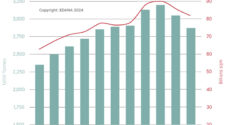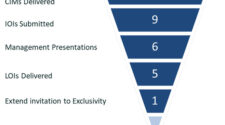A minority of companies in the filtration industry are achieving EBITA of 30%. The average is less than 15%.
How does a filtration company improve EBITA? The answer is to provide a product with a true cost much lower than the competition and adjust gross margins to share some of the product benefits with the customer.
The two routes for achieving the lowest true cost are to:
- reduce the product cost; and/or
- improve product performance.
Nearly half the filtration purchases are based more on the performance of the product than its cost. It is this segment which is covered in the following analysis.
The potential market is comprised of thousands of niches in hundreds of countries. The challenge is to pick the niches where a superior product can be delivered with the lowest true cost.

It is necessary to determine the TCO factors in each niche and then to select those niches where a superior product can be supplied.
It is necessary to determine TAM, but the focus will need to be on a segment. The market which can be serviced (SAM) is only a portion of TAM. Competition and unique TCO factors further limit the obtainable market.
Rather than pursue the entire obtainable market (SOM), the resources should be focused on the MPM segments.
This requires knowing all the advantages and disadvantages of a product as it will be used in each industry and each application within that industry.
This analysis should be extended to each plant of each prospect.
There is an effort and cost to obtain this analysis, but it is relatively small when all costs of making the sale are considered.
Superior products can be developed only if there is a deep understanding of the customers and their challenges. It should be proactive.
3M did not wait for homeowners to request higher efficiency air filters. 3M realized the opportunity and educated purchasers about the true costs, including health.
A product can be deemed superior and reduce cost of ownership for many reasons:
• Reduce maintenance
• Improve safety
• Increase production
• Improve the final product
• Reduce product loss
• Improve the environment
• Reduce energy costs
The superiority is relative and is therefore in part determined by the performance of competitors’ products.
The more dynamic the market the easier it is to develop a superior product because:
• There is much less competition
• There is the potential for substantial benefits to the purchaser who may be pursuing new opportunities
• Hydrogen production and use would be one example
• Biopharmaceutical processes with small production runs of very expensive drugs would be another
The MPM program starts with a TAM analysis and then a simultaneous analysis of the aggregated market, as well as that for each major prospect or groups of prospects with the same TCO factors.
There are nine steps to the MPM Program.

MPM Program

Niche Analysis
• Each opportunity with unique TCO factors should be analyzed
• The product opportunity focus should be expanded to any variation which could impact TCO
• All industry candidates should be considered
• Any relevant application within that industry needs scrutiny
• Geographical factors should be included
Preliminary Selection
The TAM for each industry and each application within that industry is needed
• Based on the TCO factors the potential EBITA can be calculated
• The competitive factors further impact projected EBITA
EBITA Ranking by Industry and Application
Based on the TCO and market size in each niche a ranking of opportunities based on projected EBITA can be created.
Individual Prospect Analysis
There should be a continuous assessment of each prospect. Since most new filtration products are purchased by companies who already utilize the product these prospects can be identified, and the TAM determined.
Individual Prospect EBITA Targets
With information available from McIlvaine and other resources EBITA targets can be set for each major prospect individually and for minor prospects in groups by location within a sales territory.
Validate LTCO for each application
The evidence of the product superiority needs to reach beyond the group involved in normal analysis to those willing to consider a new product with LTCOV.
Validate the LTCO for specific Prospects
The time warranted by sales and management people to make a sale is dependent on the potential EBITA. The time it will take to validate the LTCO for that specific customer and make the sale will be less than with the conventional approach.
Facilitate Bottoms Up Collaboration.
The cost of individual prospect validation is greatly reduced by collaboration among salespeople within the division as well as those in other divisions calling on the same customer.
Leverage Content Marketing
The marketing effort can communicate the superiority of the product in each niche. This is more of a marketing challenge than just generalizing about product benefits. It requires communicating unique TCO advantages in each niche to those niche operators who are receptive to a new and better product.
A program which is based on reducing the true cost of the customers operations benefits not only the supplier with the increased EBITA but can greatly impact the customer fortunes. Semiconductor and pharmaceutical products are highly dependent on the highest performance filters. Neither industry would have achieved rapid growth without them.













